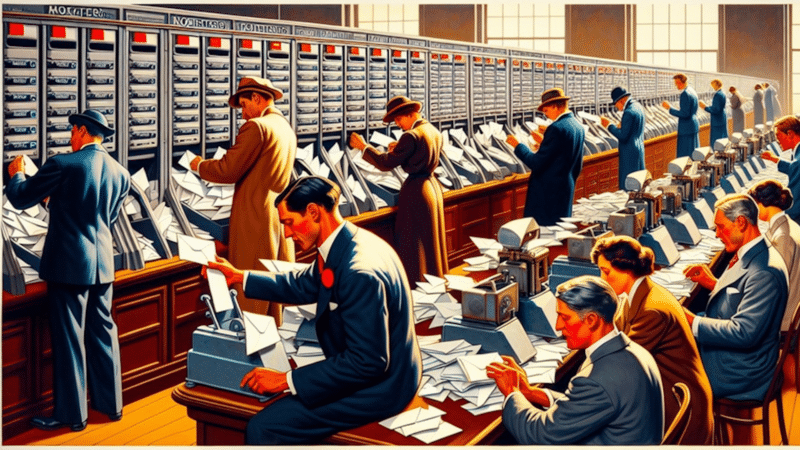Email has come a long way from its early days as a blunt instrument for blasting information to a wide audience. Today, it’s more like a Swiss army knife, with a use case for almost every situation across the customer journey.
From the moment someone first encounters your brand to the ongoing relationship that follows a purchase, email is the connective tissue that binds these interactions together — if you’re using it correctly.
Technological advancements drove this massive shift, changing consumer behaviors and marketers’ relentless pursuit of more effective ways to engage their audiences. Lately, there’s a new element to consider with AI, from generative AI like ChatGPT to automation tools like those built into HubSpot. So, how should you be using email now?
Email is no longer a digital megaphone
Email is no longer about sending a single message to a massive list of recipients but rather about delivering tailored, relevant content to individuals who have opted to receive it. This shift has changed the way businesses approach email marketing, now emphasizing the importance of segmentation, personalization and building relationships with customers.
More than ever, email serves as a way to foster one-on-one connections, provide value and build long-lasting relationships with customers. It’s a channel that allows businesses to engage with their audience on a deeper level, offering content that is relevant, timely and personalized to each individual recipient.
Instead of one-off blasts, email is a continuous thread that guides customers through their journey with your brand. Thanks to technology like automation and data analytics, marketers can more easily segment audiences, tailor messages and deliver content that resonates on a personal level. But how exactly?
Dig deeper: Email marketing strategy: A marketer’s guide
How should you be using email in your marketing strategy?
Rather than a series of blasts talking to nobody in particular, modern email should function as part of a well-oiled machine, delivering the right message to the right person at the right time throughout the customer journey.
From the customer side, it should feel almost like a conversation that evolves over time as they gradually engage more deeply with your business.
1. Lead generation: The first hello
Whether through cold outreach, newsletter sign-ups or offering valuable resources like ebooks or webinars in exchange for an email address, this first interaction is your opportunity to make a great first impression and lay the groundwork for a relationship that could evolve into a loyal customer. Make sure your lead generation emails are interesting, offer undeniable value, and set the tone for what recipients can expect from you.
AI tools can improve your email personalization at a larger scale here, but recipients are increasingly wary about AI, so use it carefully. When it comes to cold outreach, consider that generative AI is exacerbating the spike in cold email volume, so prospects have higher defenses against it.
Dig deeper: AI-powered cold email: A nightmare in the making?
2. Nurturing relationships: Keeping the conversation going
Once you’ve made that initial contact, don’t let the conversation end there. Use email to nurture those leads. This could mean:
- Sending a welcome series that introduces new subscribers to your brand.
- Providing educational content that addresses their needs.
- Updating them on new products and services.
This is also easier than it used to be. AI is helping marketers personalize emails at scale, automate processes, and gain valuable insights from customer data.
Each email should feel like it’s part of an ongoing dialogue, one that gradually moves the recipient closer to making a purchase decision. Just don’t assume they’ve read everything you sent — let’s face it, we’re busy.
Dig deeper: The email marketer’s guide to effective marketing automation
3. Referral programs: Turning customers into advocates
Your existing customers can be your biggest advocates. Encourage them to spread the word about your brand through referral program emails.
Offer incentives that reward both the referrer and the referee. This helps expand your reach and strengthens your relationship with existing customers by showing that you value their support.
4. Sales and promotions: Driving immediate action
Promotional emails can be your best friend when it’s time to boost sales. Whether it’s announcing a flash sale, offering exclusive discounts or alerting subscribers to new products, these emails can drive immediate action.
Make sure these offers are time-sensitive and exclusive to create a sense of urgency and exclusivity. (And make sure you’re compliant with the 2024 email marketing rules.)
5. Content marketing: Establishing your authority
Email is an excellent channel for distributing your content and establishing your brand as a thought leader in your industry. Share your latest blog posts, videos, podcast episodes or infographics directly in your subscribers’ inboxes. This helps with engagement and reinforces your position as a go-to resource in your field.
While it’s tempting to rely on AI to create all your content, the thing that makes content enticing is when you provide valuable information or perspectives that your audience wants. Generative AI struggles to offer this type of originality. Overdependence on AI can damage trust and risk damaging your site’s SEO when it comes to blog content.
Dig deeper: 3 ways email marketers should actually use AI
6. Engagement and retention: Staying on their radar
Engaging and keeping your customers interested is crucial for your brand’s enduring success. Use email to survey your customers, ensuring you’re in tune with their satisfaction levels. Celebrate key milestones like the anniversary of their first purchase with you, or make them feel special by inviting them to exclusive VIP programs.
It’s especially important to show this kind of appreciation and attention to these longer-term customers because, too often, the best perks (like big discounts) are only available for new customers, which can disincentivize loyalty.
Seek their opinions on your products through feedback surveys and encourage them to share their stories or experiences with your brand. These strategies maintain ongoing interaction and deepen loyalty by showing appreciation and valuing their input.
Dig deeper: 3 keys for better email engagement in Gmail
Contributing authors are invited to create content for MarTech and are chosen for their expertise and contribution to the martech community. Our contributors work under the oversight of the editorial staff and contributions are checked for quality and relevance to our readers. The opinions they express are their own.




